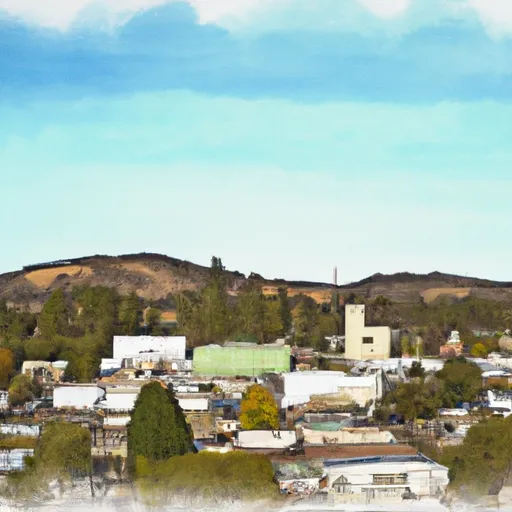-
 Snoflo Premium
Snoflo Premium
Get unlimited access to all our content
With no Ad interruptions! - Start Your Free Trial Login with existing account
Quincy
Eden Index
Climate
9.9
•
Recreation
8.5
•
Community
3.4
•
Safeguard
7.8/10

Located in Plumas County, Quincy, California is a charming small town nestled in the Sierra Nevada Mountains. Known for its picturesque landscapes and abundant recreational opportunities, this town offers a unique combination of a rural lifestyle and natural beauty.
Quincy experiences a Mediterranean climate, characterized by hot, dry summers and cool, wet winters. Summers are ideal for outdoor activities, with temperatures averaging around 80°F (27°C). Winters bring cooler temperatures and occasional snowfall, perfect for winter sports enthusiasts.
Hydrologically, Quincy is surrounded by pristine lakes and rivers. The Feather River, renowned for its fishing and boating opportunities, flows nearby. Other notable water bodies include Bucks Lake and Frenchman Lake, attracting water sports enthusiasts and anglers alike.
Outdoor recreation enthusiasts will find ample opportunities in Quincy. Hiking and camping are popular in the nearby Plumas National Forest, offering numerous trails with stunning vistas. The town itself is also home to numerous parks and recreational areas, including Gansner Park and Cloman Park, perfect for picnicking or leisurely strolls.
In conclusion, Quincy, California offers a pleasant climate, abundant hydrology constituents, and a myriad of outdoor recreation opportunities. Whether it's exploring the natural beauty of the Sierra Nevada Mountains or enjoying water activities in nearby lakes and rivers, Quincy provides an idyllic setting for outdoor enthusiasts.
What is the Eden Index?
The Snoflo Eden Index serves as a comprehensive rating system for regions, evaluating their desirability through a holistic assessment of climate health, outdoor recreation opportunities, and natural disaster risk, acknowledging the profound impact of these factors on livability and well-being.
Climate Health Indicator (CHI): 9.9
Quincy receives approximately
1097mm of rain per year,
with humidity levels near 63%
and air temperatures averaging around
11°C.
Quincy has a plant hardyness factor of
8, meaning
plants and agriculture in this region tend to thrive here all year round.
By considering the ideal temperature range, reliable water supplies, clean air, and stable seasonal rain or snowpacks, the Climate Health Indicator (CHI) underscores the significance of a healthy climate as the foundation for quality living.
A healthy climate is paramount for ensuring a high quality of life and livability in a region, fostering both physical well-being and environmental harmony. This can be characterized by ideal temperatures, reliable access to water supplies, clean air, and consistent seasonal rain or snowpacks.
Weather Forecast
Streamflow Conditions
Lower Sacramento
Area Rivers
Lower Sacramento
Snowpack Depths
Lower Sacramento
Reservoir Storage Capacity
Lower Sacramento
Groundwater Levels
Recreational Opportunity Index (ROI): 8.5
The Recreational Opportunity Index (ROI) recognizes the value of outdoor recreational options, such as parks, hiking trails, camping sites, and fishing spots, while acknowledging that climate plays a pivotal role in ensuring the comfort and consistency of these experiences.
Access to outdoor recreational opportunities, encompassing activities such as parks, hiking, camping, and fishing, is crucial for overall well-being, and the climate plays a pivotal role in enabling and enhancing these experiences, ensuring that individuals can engage in nature-based activities comfortably and consistently.
Camping Areas
| Campground | Campsites | Reservations | Toilets | Showers | Elevation |
|---|---|---|---|---|---|
| Little Beaver | 120 | 5,066 ft | |||
| Sly Creek | 23 | 3,554 ft | |||
| Tooms RV | None | 5,049 ft | |||
| Golden Trout Crossing | 5 | 4,002 ft | |||
| Running Deer | 40 | 5,169 ft | |||
| Red Feather | 60 | 5,055 ft | |||
| Black Rock Tent(Family ) | 20 | 5,052 ft | |||
| Peninsula Tent (Family ) | 25 | 5,033 ft | |||
| Ramshorn | 16 | 2,713 ft | |||
| Wyandotte | 28 | 5,060 ft |
Nearby Ski Areas
Catastrophe Safeguard Index (CSI):
The Catastrophe Safeguard Index (CSI) recognizes that natural disaster risk, encompassing floods, fires, hurricanes, and tornadoes, can drastically affect safety and the overall appeal of an area.
The level of natural disaster risk in a region significantly affects safety and the overall livability, with climate change amplifying these risks by potentially increasing the frequency and intensity of events like floods, fires, hurricanes, and tornadoes, thereby posing substantial challenges to community resilience and well-being.
Community Resilience Indicator (CRI): 3.4
The Community Resilience Indicator (CRI) recognizes that education, healthcare, and socioeconomics are crucial to the well-being of a region. The CRI acknowledges the profound impact of these elements on residents' overall quality of life. By evaluating educational resources, healthcare accessibility, and economic inclusivity, the index captures the essential aspects that contribute to a thriving community, fostering resident satisfaction, equity, and social cohesion.

